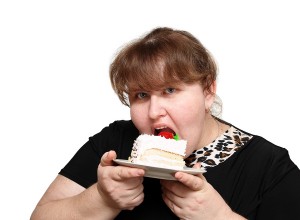Podcast: Play in new window | Download
The following is the transcript of an interview I conducted last week with Jeanne Rust, the CEO of a major eating disorder clinic in Tuscon, AZ. I think you will find what she says useful.
Jeanne: My name is Dr. Jeanne Rust and I am CEO of an Eating Disorder Treatment Program in Tucson, Arizona.
The name of the program is Mirasol and we specialize in integrated treatment which means that we do the best of the cognitive behavioral model combined with the most empirically successful things in the alternative world.
Morty: Good. What are some of these alternative things? Cognitive-behavioral therapy is the most common and most effective of the therapies. What are some of the alternatives?
Jeanne: The cognitive is the most common and the most effective and it’s also why the relapse rate with eating disorders is so high.
Morty: Explain that, please.
Jeanne: Dr. Stewart Agras who is a researcher at Stanford said that only 32 percent of people that have had treatment are eating disorder-free after a year.
Morty: Yes.
Jeanne: It’s insane. That’s just not good enough. There are people that come to my clinics that have been through seven, eight, nine other treatment programs.
Now, we’re talking about several hundred thousand dollars, we’re talking about a lot of time, we’re talking about the emotional impact, the feeling of failure.
“Well, there must be something really wrong with me. I can’t get this.” This is through just strict cognitive behavioral therapy and nutritional education.
Morty: Yes.
Jeanne: So, if a standard treatment program is going to do cognitive-behavioral therapy and nutritional education 80 percent of the time and maybe a little deeper psychotherapy or other interventions, the other 20 percent, we’re the opposite. We’re 80 percent up here.
Morty: Yes.
Jeanne: Because I believe that a lot of the ideology of eating disorders lies in the brain. I think there’s a strong genetic aspect.
I think that when somebody’s coming to treatment, we need to look at every aspect, a very holistic view. We’ve got to look at their brains. We do brain mapping. We do complete physiological exams.
Jeanne: I have a naturopathic physician on the staff and I can get a rate that MD if I need that. So we do a lot of neuro-feedback. They’ll have five sessions a week. We do acupuncture. We do polarity therapy, which is form of bodywork.
We have a spiritual director. We have an R.D. as our nutritionist. Our food is all whole food, mostly organic, because I believe that food can be used as medicine as well as just good food.
Morty: Yes.
Jeanne: But because I think really when their bodies are so depleted, whether they’re anorexic or whether they’re a binge eater, nutritionally they’re not in great shape. So these are some of the things that we do.
Morty: Okay. When you say emotional eating, do you distinguish between anorexia, bulimia, and just general emotional eating?
Jeanne: I don’t think all emotional eaters are overweight.
Morty: OK.
Jeanne: I think a good number of them are. Because they learned eating disorders, whether it’s anorexia, bulimia, or compulsive eating, it’s something that somebody learns a behavior they are going to use as way of coping the stress, and we’ve read this a million times.
Morty: Sure.
Jeanne: I’ve heard that the gastrointestinal system is one of the most highly educable systems that we have.
So when somebody is under a lot of stress, whether they’re a child, a teenager, or an adult, they’ll start practicing with some eating disorder behavior and before you know it, boom, they’ve got a clinical eating disorder.
I see people who are overweight and it looks to me like they’ve tried to build a house around themselves so that they can’t be exposed to all the hurt and the pain that’s in the world.
Morty: I agree.
Jeanne: A number of these people, not all mind you, but a number of them have been subjected to one kind of traumatic event, whether it’s an accident of some kind, an automobile accident, abuse, sexual, emotional abuse, physical abuse. It’s not all sexual abuse. There’s a lot of other kinds.
Whether they have had a series of bad events or it all happened in a short period of time. So you have a woman who was involved in an automobile accident. Her mother died and her husband left her all in the same year.
She’s in a world of pain. So, if alcohol and drugs don’t work for her, boy, food sure will.
Morty: You use a wide variety of techniques; you’re sort of eclectic. If you say the study indicated that CBT was effective only 32 percent at a time, do you have any statistics on the results of your clinic?
Jeanne: We’re someplace between 65 and 70 percent at a year. That’s why I was curious about what you do and just knowing intuitively that it affects the brain.
Because this is where so much of it is. Even if there’s a genetic aspect, sometimes you see families that are just fat families and they pass that down.
Morty: Yes.
Jeanne: But if there’s that genetic thing, you’re doing what you do or whether you are using EMDR or EFT for trauma, there’s traumatic incident reduction. For some people, just they’re so sensitive in the world that just breathing can be traumatic in a sense.
Life is not good for them. But we do focus a lot on work with the brain.
Morty: Okay. As I was indicating in our conversation earlier, in addition to beliefs, we have found that there are triggers that have been conditioned.
So what happens is, for example, negative feelings like boredom, feeling unlovable, feeling depressed, feeling unworthy, etc. can be conditioned to produce eating when you aren’t hungry.
Jeanne: Sure.
Morty: We’ve discovered about 25 different triggers and we discovered that when each one of those has been de-conditioned, that that trigger no longer as you automatically eat. That that’s a large part of what seems to be the compulsive eating problem.
Jeanne: I believe that’s true, where something that is so repetitive. By the time somebody gets to the place where they’re seeking out me or they’re seeking you for some kind of relief, they for sure have conditioned those triggers.
Morty: Yes.
Jeanne: You may have been doing this for a long time.
Morty: Yes. Generally the triggers get conditioned much earlier in life. Sometimes it can be with traumatic incidents later in life, lots of stress. But very often, you can trace the original source of a conditioning to teenage years or even earlier than that, which is where a lot of the eating beliefs also seemed to start from.
Jeanne: Remember with boredom, and I always giggle when I hear that. One of my clients told me, “Oh, gosh, I eat all the time at night. I’m just bored.” Every time I have to ask him, “Well, if you weren’t feeling bored, what would you be feeling?”
He sat back, and breathed, and really thought about that question. Oftentimes, there’s a tremendous amount of anger there.
Morty: For sure.
Jeanne: Then, if you’re talking about belief systems, that feeds right into that for sure.
If they are feeling sad, if they’re feeling a lot of anger, there’s just that hurt and pain and all of that kind of thing and they’re using some of these more acceptable feelings like boredom to cover that up.
Morty: Yes. How long a stay is it for the average person or is there an average stay? Is it different for each individual at your clinic?
Jeanne: Well, its minimum length of stay is 45 days, and I have experimented all over the place with that. I started out, twelve and a half years ago, doing two-week workshops and I thought, “Now, I’ll treat them for two weeks, send them home to work with their therapist, and with the good aftercare program, they should be fine.” Well, they weren’t.
Then, I went to 28 days, and then I went to 35 days, 42 days. In all of these, I do a lot of testing, EDI, the eating disorder inventory and the Beck depression test.
Our results are pretty stable from six months to a year based on our post testing and that’s what so unusual and I attribute that to what we’ve done in the brain.
Morty: Excellent.
Jeanne: I think you’ll probably find the same thing because there’s a changed gear.
Morty: Well, there’s clearly a change in the brain. The conditioning must go through some brain pathways. So if you’re de-conditioned, you’re clearly changing neural pathways, breaking neural patterns in some way.
Same with the belief. If you think something’s true and then get to the point, you say, “Wait a minute. I just made that up. It’s not true that I’m not good enough. I don’t believe that anymore.”
There had to be some neural connection before that’s no longer there or some new neural connection. So, at some point, as far as we’re concerned, we would like to do some studies where we do functional MRIs or other type of brain scans to see what happens at the moment in a brain a belief is eliminated.
Jeanne: That would be exciting to see, wouldn’t it?
Morty: So not only do I think you could identify what happens in the brain when beliefs are eliminated and when conditionings are de-conditioned, I also think you would find a change in the brain when a significant problem like compulsive eating is eliminated. I think that could be identified in some way also.
Jeanne: One of the reasons why is because a lot of the research that they’re doing now about obesity where they’re coming up with hormone stuff.
Jeanne: Doing our work is going to the same place as you, but in a different way.
Morty: It sounds like it.
Jeanne: Ours is not as fast as yours maybe, so that’s why I’m really, really interested in what you’re doing.
Morty: Well, I’ll give you more information about it later on, but I just want to get anything else you’d like to say about your system or your clinic. How would people find out more?
Jeanne: mirasol.net. M-I-R-A-S-O-L.
Morty: M-I-R-A-S-O-L dot net.
Jeanne: Yes.
Morty: That’s not com, it’s dot net.
Jeanne: Dot net. Mirasol means sunflower.
When I chose the name for the clinic, I pictured all of my clients heading out of treatment with their little faces pointed to the sun.
A lot of them do that. One of the things that we do as well is we offer a full year’s worth of aftercare, and that’s done on the phone. The advantage of that is when our clients leave, we just don’t say bye-bye.
We continue to maintain that relationship because we’ve developed a close relationship with them.
Morty: That’s good.
Jeanne: So, if they start to struggle, we still have that release which says that we can be in touch with their therapists at home.
We contact that therapist, talk together, and then figure out what we can do to keep her from going into full relapse, and I think this is really significant for us keeping people on track.
Morty: Okay. That sounds good. What is the scale of prices for this type of 45-day in-patient treatment?
Jeanne: It might cost $1,350 a day. I’m always willing to try work with people, working around price and everything.
You’ll find we’re in the middle as far as prices go.
Eating disorder treatment is expensive because you have to have, at least for us, so many staff.
It also seems like our patients are getting sicker than they have been, say, eight or nine years ago.
Morty: So the people that are arriving, they are in worse shape now than they were earlier?
Jeanne: Yes.
We require that people be medically stable even though we’re a level one substitute facility.
We don’t do IVs or things like that because it changes the whole quality of treatment when you got people whose little neurotransmitters aren’t working.
Morty: I understand. Is there anything else you’d like to say? Do you have an overall theory or philosophy? You say it’s 80 percent alternative, 20 percent cognitive behavior.
Jeanne: No, no, no.
I didn’t say that. I didn’t say that. I said that traditional eating disorders treatment centers will use the medical model and treatment 80 percent at the time. We go in and we’re looking for other issues. The underlying issues are the things that drive the eating disorder. It’s not the behaviors. If it were just the behaviors, that would be nothing.
But it’s all of these underlying issues.
Morty: Can you explain that further? Can you give a sense what you mean by that? What do you mean by underlying issues?
Jeanne: Okay. Probably 90 percent of our patients come in with the eating disorder and depression and anxiety.
Some will have severe obsessive-compulsive disorder. There are a number of people that have multiple psychiatric issues.
Morty: Yes.
Jeanne: Schizoid personality. Just a bunch of things. So, these are things that are difficult to get out on the phone when you’re interviewing somebody for treatment.
We do get a lot of psychiatric patients. Whether we keep them or not depends on how much they want to get well.
Morty: From your point of view, do you see these as two separate issues arising at the same time or do you see most of the psychological issues like depression, anxiety, et cetera, as the primarily cause of the eating disorder?
Jeanne: Well, I don’t think it’s the cause.
I don’t think it’s the chicken and the egg kind of thing.
But I think they’re definitely a part of it.
Morty: Okay.
Jeanne: The kind of treatment that we do is now is integrative. I don’t know if you’ve heard of Dr. Andrew Weil.
Morty: Yes, I have.
Jeanne: Well, he does integrative medical treatment.
Morty: That’s right. He’s from Tucson, isn’t it?
Jeanne: Yes.
Jeanne: It’s where I got my idea of thinking, “Well, he’s doing something in the medical community, and why can’t we do that for behavioral health?”
Jeanne: It doesn’t have to be all talk therapy because that doesn’t work for a lot of people.
You can talk to a patient till you’re blue in the face and nothing is going to happen until you start working up here, in the brain.
Morty: Yes. Very good. Is there anything else you’d like to say? We’ve got a bunch of people on our mailing list, most of whom have some sort of eating disorder, generally compulsive eating, and are interested in learning everything they can. I think what you’ve told them has been very, very useful and it’s good for them to know about your facility. Is there anything else you would like to say to people who are sitting there suffering from some eating disorder right now?
Jeanne: Yes. Right now, I’m in the process of writing. This will be available free on my website. Twenty tips for people. That’s to be for people that are compulsive eaters.
I’m also writing a short e-book on, what’s it called now? I’m Young, I’m Fat, and I’m Eating Myself to Death.
Morty: Sounds interesting.
Jeanne: Here again, I’ll use client stories and then I’ll give actual interventions that people can do at home to begin to help themselves.
I think at the bottom, I’m going to put, “Do all of these things and then call Morty, too.”
Morty: Thank you, Jeanne. I very much appreciate your time and for providing this useful information to all of our audience. Good luck with what you’re doing and we shall talk again soon.
Jeanne: You bet, Morty. Thanks a lot.









